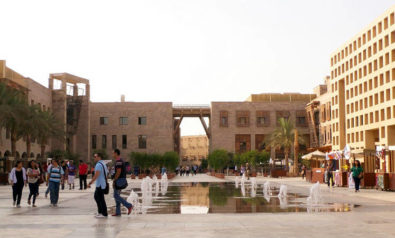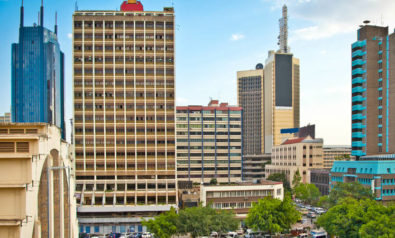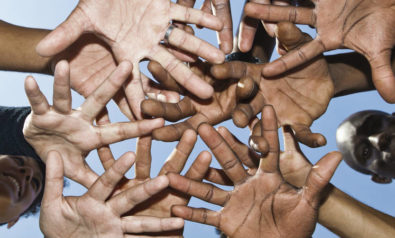How should Africa deal with millions of young people entering the job market each year?
With more than 290 million people between the ages of 10-24, Africa is the youngest continent in the world. Youths constitute about 60% of Africa’s entire population, yet their participation in the formal economy is greatly limited. “Although the youth population constitutes two-fifths of the continent’s working-age population, they make up three-fifths of the unemployed,” according to Foresight Africa. In 2011, 82% of African workers were working poor, more than twice the world average. In southern Africa, 51% of young women and 43% of young men are unemployed.
Youth Unemployment in Africa
Three major factors coalesced to garner this attention. First, the people factor: Demographics of growing young populations are forcing policymakers to address employment issues that will not be solved by public sector hiring. Second, people are more educated, yet they find fewer opportunities due to the mismatch between education and available and prospective jobs — supply does not even approach demand. Finally, governments are generally ill-equipped in terms of expertise or management, or both, to address employment issues when it means upsetting those who control much of the economic activity of a country.
These trends occur within a shifting global marketplace dominated by spiking commodity demands, increased competition in semi-skilled production and technologies, and great pressure for opening up the labor force through higher private sector investment. Although sub-Saharan Africa faces similar problems as the rest of Africa and many emerging economies, others are unique to the continent, such as the potential superstar role of the agricultural sector.
While the overall macroeconomic indicators are up and generating optimism, this is based on the continued expansion of African economies, largely due to exploitation of commodities and expansion of telecommunications infrastructure. Yet the picture is far bleaker, if factoring in actual improvements in the quality of life of most Africans.
According to a McKinsey update on the continent:
“Africa is harnessing its natural wealth, and … sectors across the economy are growing rapidly. These sectors include agriculture, manufacturing, and local services such as retail, banking, and transportation and communications, in addition to the natural resources sector, which was the largest single contributor to growth … Income inequality, however, remains unacceptably high and is falling in only about half of Africa’s countries; hundreds of millions remain trapped in poverty. Africa’s growth needs to be inclusive if it is to improve human welfare and ensure increasing social and political stability.”
The International Labour Organization (ILO) reflects this theme of inclusive growth in a number of its publications, and calls for “job-rich growth” that does not ignore the youth, women and unskilled in terms of economic opportunities. “High levels of youth unemployment, poor structural and labour market transformation call for more employment-friendly policies to promote a job-rich growth in Africa’s development strategy.” Its Global Employment Trends 2014 report stated:
“Employment growth remains weak, unemployment continues to rise, especially among young people, and large numbers of discouraged potential workers are still outside the labour market … As a result, the demographic change characterised by a growing young population is considered to be a burden on the economy rather than an asset due [to] the scarce job opportunities in the region and [the] necessary conditions required to absorb and employ this growing young population [that] are absent.”
Less than 14% of the working-age population is in paid employment, which limits the growth of a consuming middle-class. When combined with the low contributions of manufacturing and agriculture to national gross domestic products (GDP), this challenging outlook calls for proactive partnerships among stakeholders to advance the employment landscape.
Africa’s Unique Opportunities
There are at least six major targets in improving youth employment in sub-Saharan Africa:
1) Relevant and widespread education and training at all levels
2) An integrated ecosystem to support entrepreneurs, including financing, mentoring/training, access to markets, protective and supportive regulatory regime, and available infrastructure
3) Pro-business policies by governments, so investments in infrastructure, services, commercial law and related regulations are timely and transparent
4) Sustainable programs built around competitive advantages and cultural acceptance
5) A stable political environment that does not exclude new entrants or restrict sectors based on existing power relationships
6) A mindset about labor that values work as a path to a career and provides the means to acquire additional skills to progress
The African Development Bank (AfDB), among others, is very active in building programs that target many of these concerns. In a series of papers, it has tracked programs aimed at building youth employment in sub-Saharan Africa that provide important models for member countries. There are several variations, for example, of entrepreneur promotion efforts that address financing, training and mentoring issues, but lack sufficient scale to generate the number of jobs needed to dent the growing employment deficit.
People are more educated, yet they find fewer opportunities due to the mismatch between education and available and prospective jobs — supply does not even approach demand.
One theme focused on by the AfDB, and others, is the importance of reviving and building the competitiveness of the agricultural sector. Nowhere in the world is there as much underutilized arable land as in Africa. Significantly, the least skilled and literate populations are in the rural areas. With the ever increasing demand for food, experts believe the agricultural sector offers benefits to feed locals and supply overseas demand.
Shantayanan Devarajan, chief economist for the World Bank’s Africa Region, articulated this need for understanding the roles of the formal and informal labor forces: “The challenge of youth employment in Africa, therefore, is not just to create more wage and salary jobs — important as this may be — but to increase the productivity, and hence earnings of the majority of young people who will be employed in informal farms and household enterprises.” He emphasized that:
“…because most Africans will work in informal farms and household enterprises, the challenge of increasing their productivity needs to be met by first, increasing their basic skills, which they can then take with them when they move to the new enterprises; and second, creating jobs in the formal sector by improving the economy’s competitiveness, so that this sector can absorb more qualified workers into a productive workforce.”
According to Busani Bafana, writing for Africa Renewal: “Despite the negative perceptions, the agricultural sector employs as much as 60% of Africa’s labour force … and accounts for only 25% of the continent’s gross domestic product (GDP).” He cites experts who see agriculture as an important engine of growth, if the government and private sector act together to build the supply chain and distribution infrastructure that will turn today’s deficits into jobs and income. As importantly, it is a sector that can absorb large numbers of youth and women in productive jobs.
Turning Good Intentions into Results
The broad consensus among the private sector, international donor community and host governments about the need to aggressively pursue youth employment policies is an opportunity. Such an initiative could scale-up existing effective programs and help absorb the 10-12 million annual new entrants to the job market in sub-Saharan Africa. By implementing a broad strategy that incorporates rural as well as more traditional manufacturing options, utilizing technology across all sectors to improve productivity, and including women and youth in employment programs that increase their skills and employability, Africa has a viable and realistic opportunity to diminish its employment deficit and build a strong middle-class.
Moreover, if the countries of sub-Saharan Africa can understand the regional and local benefits that can be obtained from labor mobility, resource sharing, better distribution and power infrastructure, and streamlined business procedures, the task of generating worthwhile jobs becomes less onerous and reflects the deep commitment needed to propel Africa forward.
*[In partnership with Ashoka’s Future Forward initiative, which is finding Innovations for Youth Employment in Africa, Fair Observer explores the theme: Who is responsible for addressing youth employment in Africa? From June to September 2014, we will be developing online events and a series of articles that will gather multiple perspectives and provide a 360° analysis on the topic. Join the conversation by following and contributing to #AfricaYouthFwd through social media channels.]
The views expressed in this article are the author’s own and do not necessarily reflect Fair Observer’s editorial policy.
Support Fair Observer
We rely on your support for our independence, diversity and quality.
For more than 10 years, Fair Observer has been free, fair and independent. No billionaire owns us, no advertisers control us. We are a reader-supported nonprofit. Unlike many other publications, we keep our content free for readers regardless of where they live or whether they can afford to pay. We have no paywalls and no ads.
In the post-truth era of fake news, echo chambers and filter bubbles, we publish a plurality of perspectives from around the world. Anyone can publish with us, but everyone goes through a rigorous editorial process. So, you get fact-checked, well-reasoned content instead of noise.
We publish 2,500+ voices from 90+ countries. We also conduct education and training programs
on subjects ranging from digital media and journalism to writing and critical thinking. This
doesn’t come cheap. Servers, editors, trainers and web developers cost
money.
Please consider supporting us on a regular basis as a recurring donor or a
sustaining member.
Will you support FO’s journalism?
We rely on your support for our independence, diversity and quality.





















Comment